As we move into the heart of summer, the produce department remains a bright spot in retail performance. While momentum has eased slightly in recent weeks, demand for fresh, high-quality produce continues to drive strong engagement across categories.
- Year-to-date (YTD) produce dollar sales are up 2.8%, with volume sales increasing 2.3% versus the prior year.
- Fruit continues to lead growth with a robust 6.5% increase, while vegetables remain challenged.
- Over the past 4 weeks, produce sales have grown modestly—up 1.5% in dollars—while overall demand has held relatively flat.
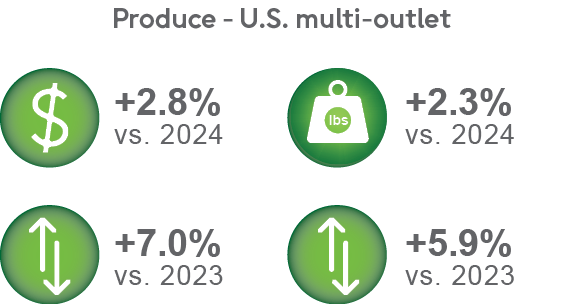
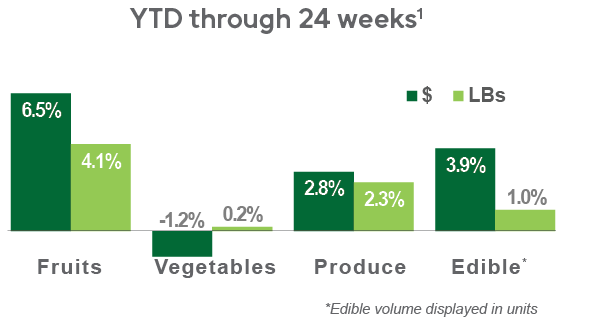
Regional performance YTD (24 weeks)1
Balanced growth in dollar sales and lbs across all regions thru 24 weeks.
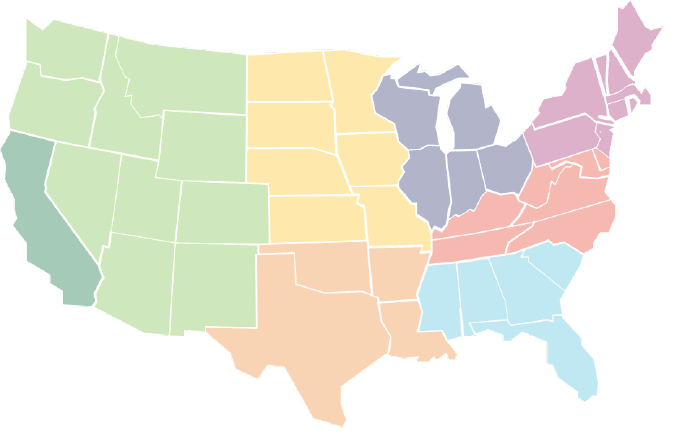
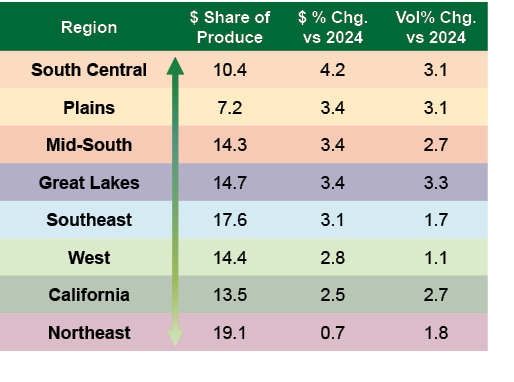
Top 10 fruits & vegetables YTD1($ Sales)
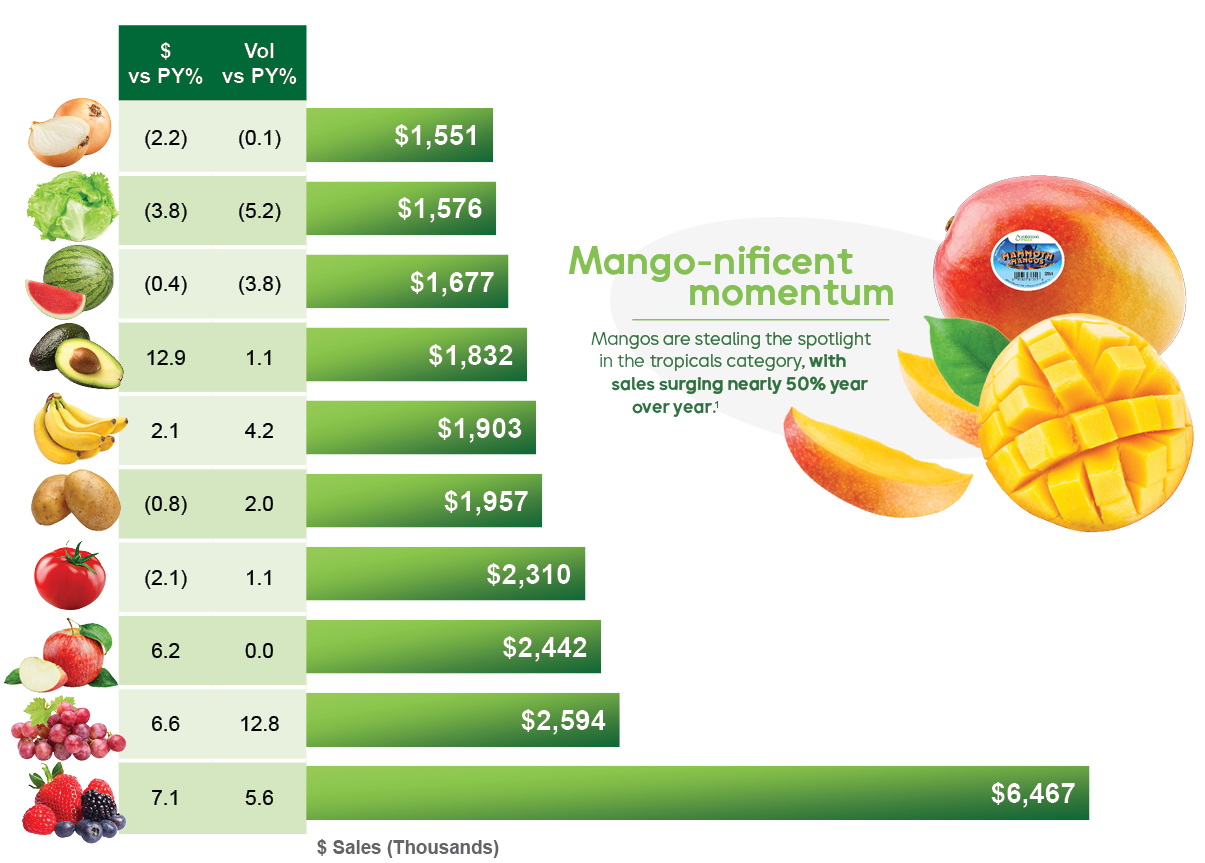
Commodity spotlight: Grapes
The grape category continues to perform reliably, supported by strong consumer demand. While imports keep shelves stocked year-round, the California season, spanning late spring through early fall, drives the bulk of annual volume and pricing trends. A strong harvest from California often sets the tone for the category’s success through the rest of the year.

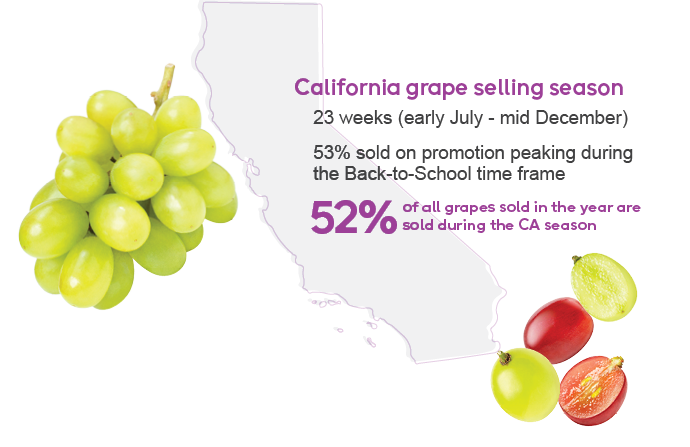
GLP-1s spark fresh produce shift
A growing trend in health and wellness is reshaping how consumers approach food: the increasing use of GLP-1 receptor agonists. Originally developed for managing metabolic conditions, these medications are now widely adopted for their appetite-regulating effects, leading to noticeable shifts in eating habits and grocery spending.
What this means for fresh produceWhile overall food consumption may decline among users of these medications, the shift is largely away from highly processed, calorie-dense foods. In contrast, fresh produce, naturally low in calories and rich in nutrients, stands to benefit. Consumers are becoming more intentional about what they eat, and fruits and vegetables are a natural fit for this new, health-conscious mindset.

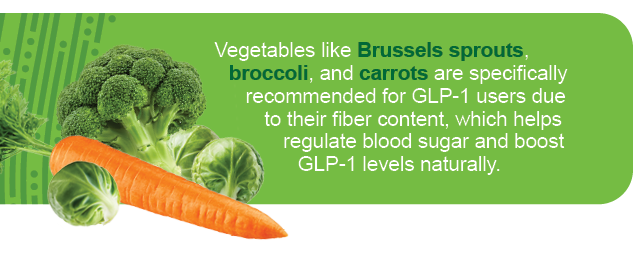
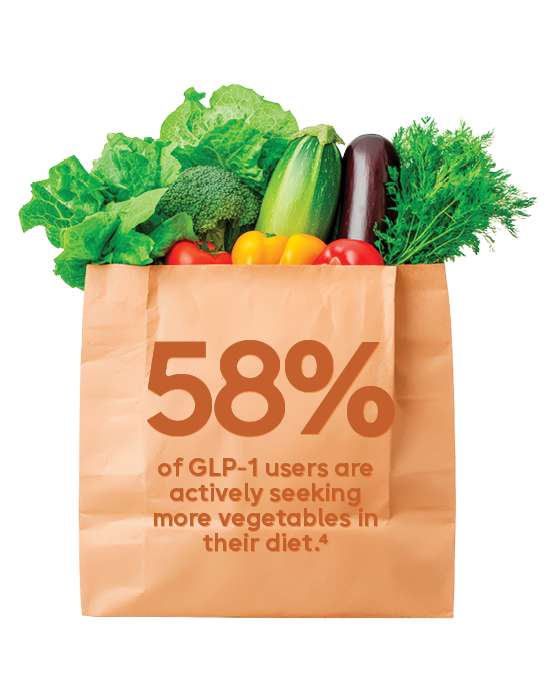
Retail opportunities to increase sales
Promote fruits and vegetables that support weight loss and blood sugar control.
Offer portion-controlled optionsCreate smaller, nutrient-rich produce packs and ready-to-eat meals for reduced appetites.
Educate shoppers in-storeUse dietitians, signage, and shelf tags to guide GLP-1 users toward the right foods.
Bundle wellness productsPair produce with hydration, fiber, and gut health items in curated wellness sections.
Fresh snacking for back to school
As families gear up for the back-to-school season, fresh snacking is taking center stage in lunchboxes and after-school routines.
Today’s parents are more label-conscious than ever, seeking out snacks that are nutritious, low in added sugars, and easy to pack. Fresh produce checks all the boxes—offering natural sweetness, essential nutrients, and kid-friendly appeal.
Top trends to watch
- .
- Snackable formats: Think mini cucumbers, baby carrots, grape tomatoes, and fruit cups—perfect for small hands and busy schedules.
- Pre-portioned packs: Single-serve apple slices, berry medleys, and veggie dippers make healthy choices easy and accessible.
- Dip pairings: Promote produce alongside dips like hummus or yogurt to boost flavor and satiety.
Retailer tips
- Create back-to-school snack stations in-store with bundled produce packs.
- Use signage that speaks to parents’ priorities: “Smart Snacks for Smart Kids” or “Lunchbox-Ready Fresh Picks.”
- Partner with schools or local organizations to promote healthy snacking habits in your community.
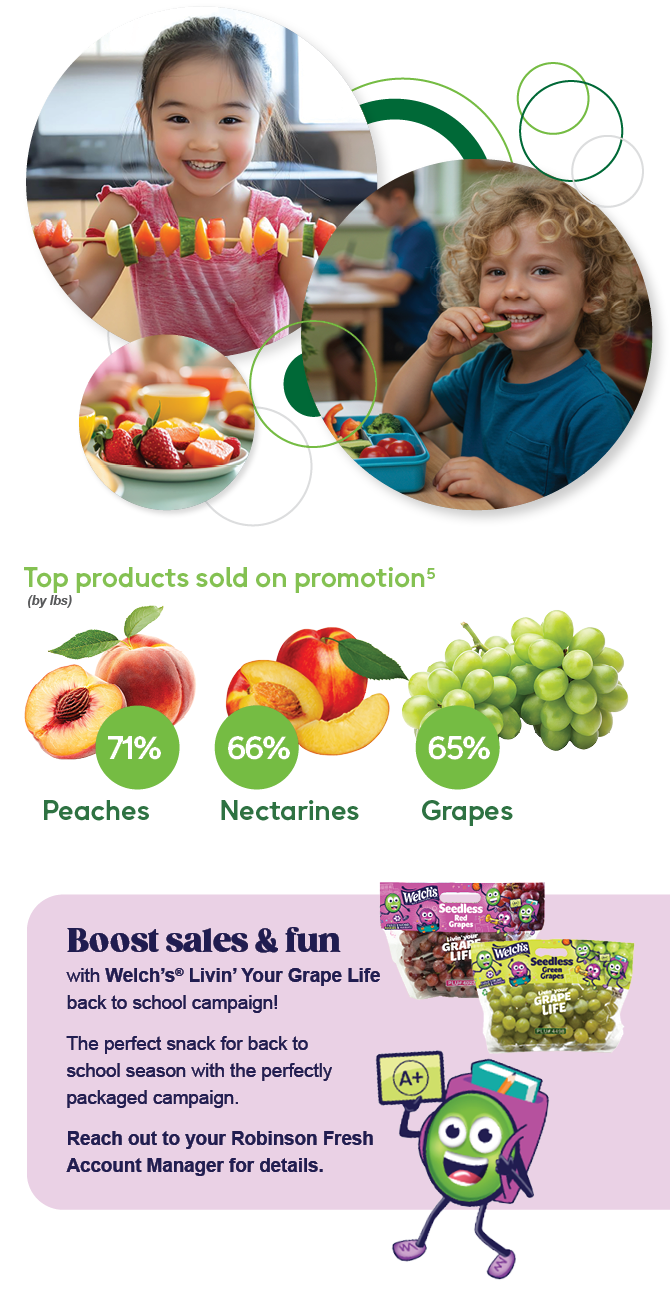
- Circana Integrated Fresh: Total US, MULO, Calendar Year 2025 Ending 06/15/2025
- Circana Integrated Fresh & Syndicated POS: Total US, MULO, Calendar Year 2024
- Circana Complete - June 2022-June 2024//GLP-1 cohort consumption levels are then compared to non-GLP-1 users’ per-capita consumption levels month-by month to calculate our monthly “consumption index” – index of 110 implies the GLP-1 cohort is consuming at a rate ~10% greater than non-GLP-1 users.
- Circana NET® HABTS, 12 months ending Sept. 2024.
- Circana Syndicated POS: 12 weeks from 7/14/2024 to 9/8/2024